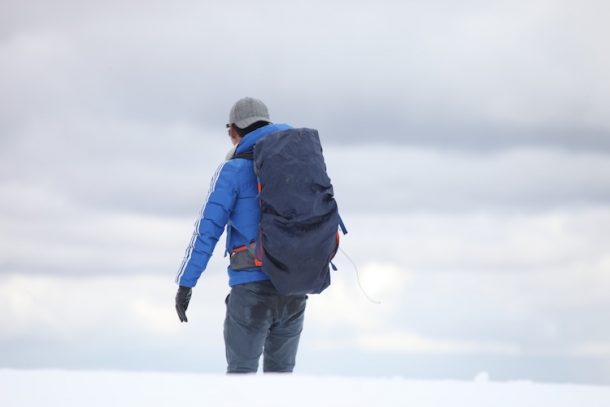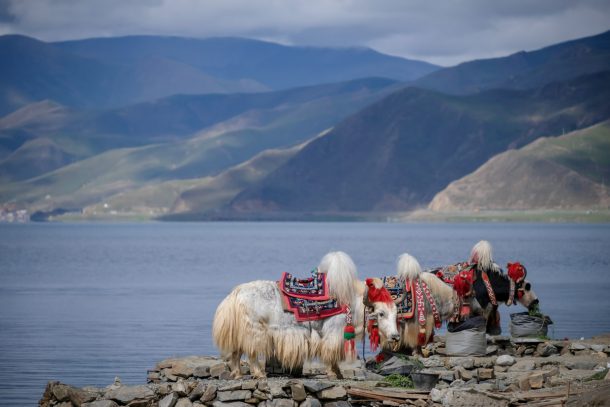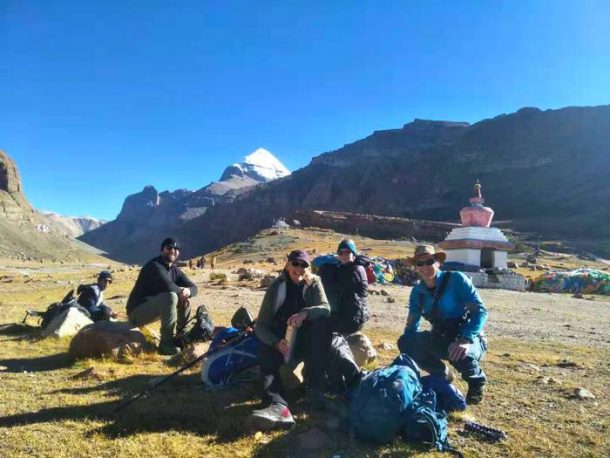How to Adapt to the High Altitudes of Tibet
The Tibet Autonomous Region lies in the Qinghai Tibet Plateau, the highest plateau on the planet. Known as the Roof of the World, this vast land lies at altitudes of more than 3,000 meters above sea level, with some areas of the region hitting as much as six thousand meters in height.

This means a plateau is a place where people tend to suffer altitude sickness effects when they arrive from low down, closer to sea level. Altitude sickness often occurs for people that travel up to high altitudes from lower ones, and few people get away with not feeling any effects at all. However, there are ways that you can help to reduce the effects of altitude sickness when you arrive.
Table of Contents
Tips for Adapting to High Altitudes in Tibet
Check your body and take doctor’s advice
Before traveling to Tibet, you should visit your personal physician for a general check-up, especially if you are taking any medication or have pre-existing medical conditions. While anyone can visit Tibet, you do need to make sure that your personal health is up to the task of traveling at high altitudes. Certain medical conditions can be aggravated by high altitudes and the effects of altitude sickness. Always get checked by your doctor before traveling to Tibet.
Acclimatize first at a lower altitude
If you really want to reduce the risk of altitude sickness during the trip to Lhasa, the best option is to stop off in Xining, at an intermediate altitude, and acclimatize there first for a day or two. This will allow your body to adjust to an altitude halfway to Lhasa, making it easier to adjust once you arrive.

Avoid showers and getting cold
Getting cold, believe it or not, is one way the risk of altitude sickness can be increased. Cold affects your ability to shrug off illnesses with a better immune system and adapt to the higher altitude. When you are cold, your heart already has to work harder to maintain warmth in your extremities. This means that the body has less strength to increase the red blood cells than the body’s way of adjusting to the thinner air. A lower increase in red blood cells means less oxygen intake per breath, which means a higher risk of altitude sickness. Stay dry when traveling, and avoid cold showers to reduce this risk.
Rest after strenuous activity
Strenuous activity is one of the most common reasons for an increase in tourists’ risks and effects of altitude sickness. The increase in activity makes the heart work harder, decreasing the amount of oxygen you take and reducing the amount of oxygen that passes to your major organs. Reducing your oxygen intake due to high train activity can see an increase in the risk of altitude sickness and the severity of the symptoms for those already suffering from it.

Ascend gradually and stop overnight at a lower altitude
One of the best ways to stave off altitude sickness is to ascend gradually and sleep lower than your highest altitude of the day. Ascending slowly means that you will have more time to acclimatize as you ascend in smaller stages. Once you reach a certain altitude above your starting height, normally around 300-400 meters per day, you should refrain from ascending higher and sleep at an altitude slightly lower for the night. This allows you to adjust to the increased altitude a little and reduces the risk of altitude sickness from happening.

Drink Tibetan sweet and yak butter tea
In Lhasa, it is generally said that drinking Tibetan Sweet Tea or Butter Tea can help you acclimatize more rapidly and with fewer effects after arriving. Since there are hundreds of teahouses in Lhasa, there is plenty of opportunities to try out this theory. There may be no scientific proof that this works to help reduce the risk of altitude sickness, but tea is known to have some effective properties that are not fully understood. So it is definitely worth a try and can have no harm since a nice warming cup of tea is often the perfect medicine to make you feel better in yourself.
Take proper sun protection and warm clothes
Sunstroke, sunburn, heatstroke; all are causes of an increase in the risk of altitude sickness on the plateau. To reduce the risk of these ailments from increasing the effects or risks of altitude sickness, you should stay covered up against the harmful UV rays of the sun using hats, sunglasses, and a good SPF sunblock.

How to Manage Altitude Sickness in Tibet
While not everyone feels the effects of altitude sickness when they reach Lhasa, almost all travelers from lower altitude regions of the world will find they will suffer from some of the symptoms, at least for a day or so when they first arrive. However, if you find that you get altitude sickness while traveling in Tibet, the first thing to do is to let your guide know. Ensure that you inform your guide so that they can take the appropriate steps to make sure you can still enjoy the trip.
If the symptoms are more severe, then your guide can contact the local medical center or hospital to have you checked and treated as necessary. However, since medical centers are few and far between in Tibet, it is best to let the guide know as early as possible, rather than the next day when you are already a thousand miles from the nearest doctor. And always, always, head for a lower altitude than where you are if the symptoms persist and get worse. Sometimes, descending can be all you need to recover.
Conclusion: Altitude sickness may occur in almost all tourists traveling to Tibet due to the extremely high altitudes, but it is not the end of the world. There are several ways to reduce the risk of altitude sickness, both before and during your trip to Tibet. Acclimatize halfway up, maintain hydration and good eating, and tell your guide if you feel ill at all. Just follow a few handy guidelines on dealing with altitude
Recent Posts
The Perfect Tibet Tour Package
Journey to Tibet
Exploring Tibet
All Categories
- About Tibet
- book a Tibet tour
- Buddhism Practice
- Budget Tour
- China-Tibet Train
- Customized Tibet tour
- Historical Sites
- Hot Springs in Tibet
- News
- Photography in Tibet
- Tibet attraction
- Tibet Group Visa
- Tibet Motorcycle Tour
- Tibet Small Group Tours
- Tibet Tours and Tibetan Tour Guide
- Tibet Train
- Tibet Travel FAQs
- Tibet Travel Information
- Tibet Travel News
- Tibet Travel Permit Update
- Tibet Travel Prices Rises
- Tibet Trek
- Tibet Trekking Tour
- Tibet weather and climate
- Tibet Wildlife animals
- Tibet Winter Tour
- Tibetan Buddhism
- Tibetan Cultural Features
- Tibetan Culture and Poeple
- Tibetan Festivals
- What to see in Tibet



